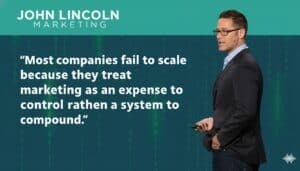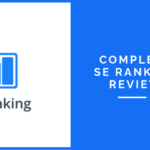
Why Compounding Growth Is the Most Undervalued Digital Marketing Strategy for Investors
Most companies in the $20 to $400 million stage are doing a lot of digital marketing, but very few feel confident that it is actually

The tool finds out what works for a search term, compares that to what you’re doing on your website, and shows you the difference.
That difference is really a list of actionable insights.
The first thing you should know is that Cora SEO is not a cloud-based solution. That means you have to download and install software.
Many of the other tools I’ve reviewed here are cloud-based. You can run them within a web browser without installing anything. That’s not the case with Cora SEO.
Also, some people claim that the download and install process is a bit “scary.” That’s especially true in this day and age when plenty of bad actors would like to infect your PC with a virus.
I’ve seen no reports of people getting a virus from installing Cora SEO, though. Also, the developer says he’s working on a way to streamline the download-and-install process.
Cora SEO works on both Windows and Mac platforms.
As is the case with virtually every other tool on the market, Cora SEO produces reports. However, those reports aren’t displayed within the application. They’re in Excel.
Cora SEO will create a report in Excel spreadsheet format and place it in an output folder that you specify.
That means the reports aren’t tied to the tool. You won’t have to fire up Cora SEO every time when you want to view them.
Instead, you can just view them in Excel.
To get started with Cora SEO, you’ll need to provide it with the following info:
That’s it. Once you’ve entered that data and clicked the Get Data button, Cora SEO will get to work.
The whole process takes 5-15 minutes. During that time, the tool will visit the top 100 results in Google for the search term and analyze those results to determine why they ranked.
Cora SEO evaluates pages with 540 on-page and off-page SEO factors. It’s pretty thorough.
Once the tool has finished its analysis of the top 100 results, it compares what it found to what you’ve done on your website. Then, it produces a report in Excel format that shows you the differences.
The Excel report is broken into tabs. The first tab is the Roadmap. It shows you what you need to improve right away by highlighting those insights in yellow.
For example, the tool might tell you that you need to use longform content or sprinkle your keyword throughout your articles more often.
The Overview tab shows you all the data. Use that if you want to dig deeper into the results for more specific analysis.
It does that by showing you the strength of each correlation (or SEO strategy that influences rank).
For example, if the tool determines that longform content is currently a factor that contributes heavily to a high rank, it will score that correlation higher than correlations that contribute less to ranking.
It should be noted, though, that the Overview tab uses a lot of statistical analysis. You might be a little confused if you’re not familiar with statistics.
Next is the Basic and Intermediate Tunings tab. That shows you every single ranking factor that you should improve.
Just keep in mind: not everything on that page correlates to a strong ranking factor. Be sure to choose the ones with the best strength.
Cora SEO also has a whole separate tab for charts. That’s helpful if you want to visualize your data.
Next is the Top Words tab. Use that to see what other words the top-ranking pages are using.
If you find that they’re using related search terms that you aren’t, you might need to make some adjustments.
There’s also a tab that gives you info about keyword densities. It shows two types of densities:
You’ll find quite a bit of statistical analysis on that page as well.
Next is the LSI tab. That shows you info about latent semantic indexing.
If you’re unfamiliar with latent semantic indexing (or LSI), it’s a mathematical concept developed in the late 1980s that helps improve information retrieval. LSI discovers the relationships between words within content.
The LSI tab will offer some insight into how ranking sites are using LSI to land in the top 100.
Finally, the tool also has a Results tab. Use that to see all the results along with their titles and meta descriptions.
As is the case with many of the other tools I’ve reviewed recently, Cora SEO isn’t just a single, standalone tool. It’s a suite of tools.
In the next several sections, I’ll go over some of the other tools that you get when you sign on with Cora SEO.
First up is the Page Tool. It lives up to its name by generating a web page for you that’s optimized for a specific keyword.
How does it do that? It’s a simple process, really.
Just select a report you’ve already run. It will be an Excel spreadsheet that was created when you used the main tool described above.
The Page Tool will analyze that report and generate a web page that’s going to give you a good shot at ranking towards the top of the search engine results pages (SERPs).
Keep in mind: it’s not a turnkey solution. The web page is really just a template. You’ll have to go in and make adjustments.
For example, the content that it generates is the Latin “lorem ipsum” nonsense that you’ve seen when you’re browsing through WordPress themes for sale. Sprinkled throughout that Latin is the relevant keyword.
So the Page Tool gives you a web page that’s really just a starting point. It’s up to you to do the rest.
Next is the Trends Tool. It’s useful for analyzing a specific niche.
Here’s how it works: move several Cora SEO reports with related keywords to a folder. Then, specify that folder when you run the Trends Tool.
The tool will evaluate the content of each report in the folder and produce a new report that identifies the best ranking factors for all of them.
For example, you might find that putting the keyword in the body tag is a top ranking factor for all the keywords. Or maybe longform content is at the top of the list.
Use those insights to optimize your content going forward. You might not even need to run additional Cora SEO reports for specific keywords.
The Diff Tool compares the top ranking factors for a specific keyword at different points in time. That’s useful if you want to analyze how an algorithm change affected ranking factors.
To use the tool, just select your “Before” and “After” Cora SEO reports. You might use one report from a date just before a recently announced algorithm update and another one that you ran after the update.
The tool produces a report that shows you which ranking factors went up and which ones went down. It also shows you how far each factor went up or down in terms of its overall level of importance.
For example, if longform content was the top ranking factor before the update but now it’s the third most important ranking factor, then it went down two places.
The Diff Tool shows how you need to update your SEO strategy following a Google algorithm change.
The Keywords Tool, as the name implies, helps you identify keywords relevant to your line of business.
In addition to identifying keywords, it will also provide you with geo-specific keywords. In other words, it will find keywords relevant to a specific region.
The tool will also combine the overall keyword list with the geo-specific keyword list so you can identify common search terms.
The Outreach Tool is useful if you want to market your SEO services to potential clients.
Here’s how it works: you find a keyword relevant to a business that you would like to become a client. Then, run a Cora SEO report for that keyword.
Next, fire up the Outreach Tool and select the report you just ran. The tool will create an HTML document that details all of the high-level findings from the SEO report. The document will also include a preface like: “We noticed that your website could improve in rank with the following changes.”
You can use that HTML document in an email to potential clients. It might be all that’s needed to get them to give you a call and start some business.
Cora SEO isn’t cheap. There’s only one plan offered and it goes for $250 per month.
The good news, though, is that you can cancel at any time and there are no contracts you have to sign.
If you don’t pay on any given month, the software will stop working. It’s that simple.
Cora SEO is a unique toolset. You won’t find too many others like it on the market.
If you’d like to find out why your competitors are succeeding in gaining rank and you’re not, it’s a great piece of software. That’s because it uses statistical analysis to determine ranking factors.
You’ll also find that the training videos are very helpful. The developer shows you exactly how to use each of the tools in the set.
It doesn’t look like there’s any kind of free trial period, though. So you’ll have to risk at least $250 up-front if you’d like to give Cora SEO a test drive.
Welcome to John Lincoln’s personal website. You can learn about John Lincoln’s books, films, book him to speak and contact him. John is directly associated with many of the businesses mentioned on this website and freely discloses this information.

John Lincoln is CEO of Ignite Visibility, one of the top digital marketing agencies in the nation. Outside of Ignite Visibility, Lincoln is a frequent speaker and author of the books Advolution, Digital Influencer and The Forecaster Method. Lincoln is consistently named one of the top digital marketers in the industry and was the recipient of the coveted Search Engine Land “Search Marketer of The Year” award. Lincoln has taught digital marketing and Web Analytics at the University of California San Diego, has been named as one of San Diego’s most admired CEO’s and a top business leader under 40.
Want to get in touch with John Lincoln? Click Here To Reach Out.

Most companies in the $20 to $400 million stage are doing a lot of digital marketing, but very few feel confident that it is actually

Google Search Quality Rater Guidelines Compliance Checklist Google’s Search Quality Rater Guidelines (SQRG) are not a direct ranking algorithm, but they are the playbook human
Hey everybody, this is John Lincoln. It has been a while since I last updated this website. The last post here was on August 2,
 My Review Of SE Ranking - Should You Try It?
My Review Of SE Ranking - Should You Try It? “All-Inclusive cloud-based SEO software.” That’s the headline you’ll see when you visit the homepage of SE Ranking. And that headline really says